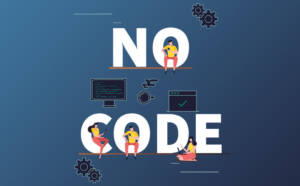Artificial Intelligence (AI) is like a smart helper that can help kids learn and solve problems while having fun. It teaches them new skills, boosts their creativity, and lets them learn on their own. AI is not just in games and learning apps but also works as a digital friend, helping kids with their daily tasks. This blog talks about what AI is and how parents can help their kids learn about it. We’ll also explore easy ways for kids to learn AI and check out some cool platforms that teach machine learning and AI.
This blog will introduce you to 10 great platforms where kids can learn about machine learning and AI. As technology keeps getting better, AI tools, like Generative AI and AI authors, are changing how kids play games and learn, making education more enjoyable. At Creative Fabrica, we believe that learning and fun go together, so we’ve made AI tools just for kids, helping them be more creative and learn new things.
Table of Contents
AI Tools Revolutionizing Children’s Education
AI tools are like smart helpers that make learning more fun and special for kids. They do this by understanding how each child learns best and then making learning activities that match each child’s way of learning. These tools use games, stories, and cool activities that feel like playing but also teach important things like maths or how to code. They also help teachers and parents know how well a child is doing and where they might need more help, so everyone can work together to make learning better.
These special tools also let kids explore exciting things like robots, puzzles, and science experiments. They show children how to think logically, solve problems, and be creative. This helps them learn important skills that will help them when they grow up. With AI tools, learning becomes an adventure where kids can have fun while discovering new things about the world around them.
Impact and Benefits of AI Tools on Young Minds
AI tools for kids bring a world of benefits, making learning exciting and enjoyable. These smart helpers, like educational apps and games, help children understand and solve problems in a fun way. They adapt to each child’s speed, offering specific learning experiences, promoting critical thinking, and encouraging creativity. Moreover, AI enhances safety in online activities, provides content filtering, and encourages interest in STEM fields. Overall, AI tools help children develop problem-solving skills, explore their creativity, and prepare for future careers in a rapidly advancing technological world.
Types Of Best AI Tools For Kids
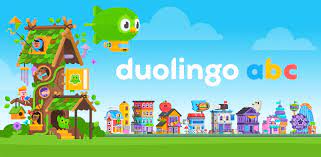
Duolingo for Kids
Engaging language learning app tailored for young learners.
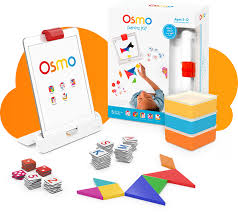
Osmo’s Educational Kits
Interactive learning sets combining physical and digital activities for children.
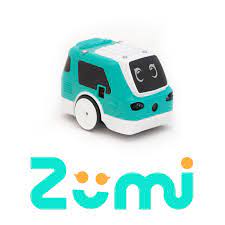
Zumi the AI Robot
Hands-on robotics experience for children, featuring programming and AI capabilities.
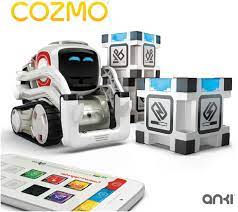
Cozmo by Anki
AI-powered robot companion with interactive games and programming features.
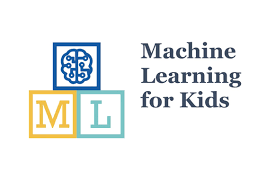
Machine Learning For Kids
This tool helps children learn about machine learning in a way similar to that of a kind teacher.

Cognimates
Kid-friendly platform for game creation, robot programming, and AI model training.
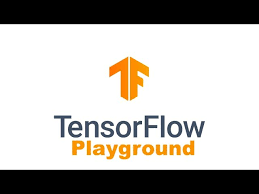
Tensorflow Playground and Machine Learning
This tool makes programs that learn from data, like how our brains do.

AI Experiments With Google
This kid-friendly tool covers various topics and lets children chat with A.I. using images, drawings, language, and music.

AI Family Challenge
It encourages creativity and shows that AI can be a helpful friend, not a scary robot.

Technovation’s Programs
Empowering girls to become leaders and innovators in technology through global tech challenges.
Duolingo for Kids
Duolingo’s platform for kids stands out in the world of language learning. It’s not just a simplified version of the adult app; it’s a thoughtfully designed tool that aims to make learning languages enjoyable and easy for children.
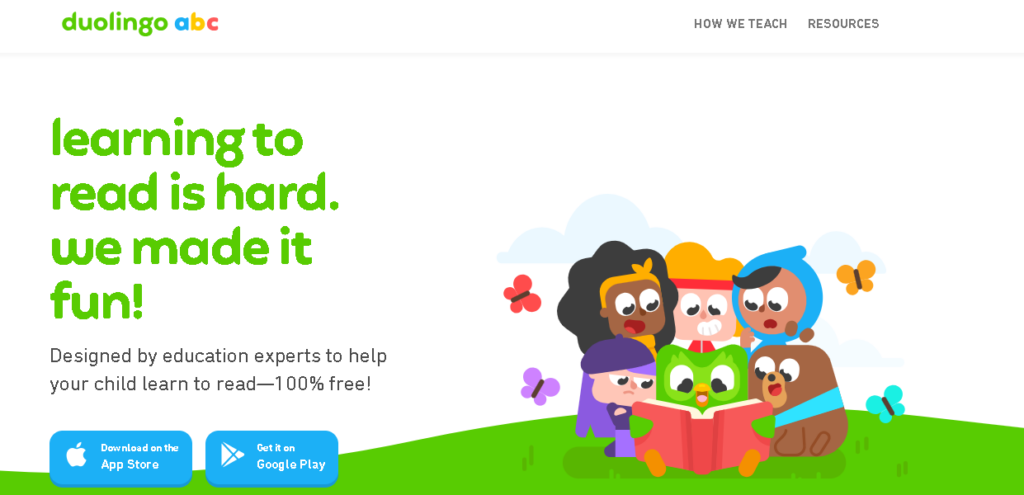
Features:
- With Duolingo, children can learn a variety of languages using pictures, audio, and text.
- The app’s game-like lessons encourage regular practice and skill-building.
- Gamification techniques like rewards, badges, and progress tracking.
- Interactive activities such as matching games, picture quizzes, and speaking exercises.
- Adaptability to each child’s learning pace and level.
- Parental involvement through progress monitoring and support.
- Ensured age-appropriate and safe content.
- Multi-platform accessibility for learning anytime, anywhere.
Osmo’s Educational Kits
Osmo is not just an app; it’s a collection of educational kits that bridge the physical and digital worlds. By using a unique system of mirrors and sensors, Osmo turns an iPad into a hands-on learning tool.
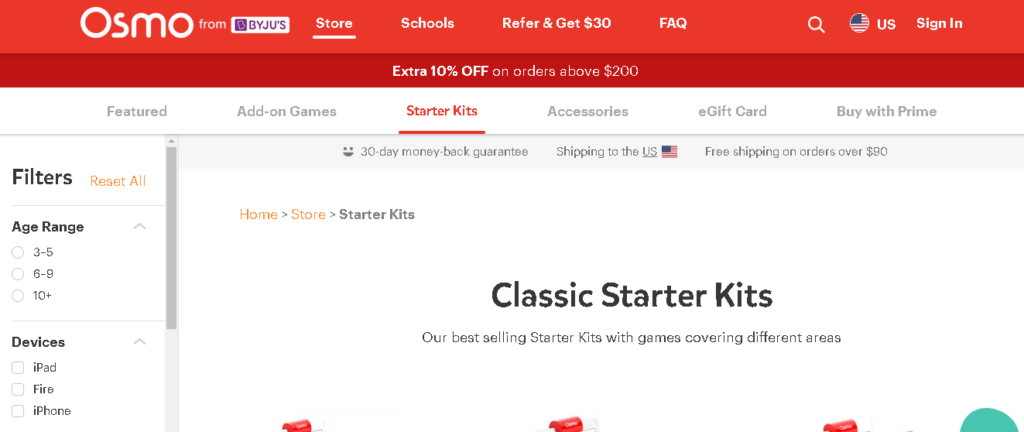
Features:
- Interactive learning experience.
- Incorporates physical objects with digital activities.
- Engaging for children.
- Designed for various age groups.
- The software covers a range of subjects from math and coding to art and critical thinking.
Zumi the AI Robot
Zumi the AI Robot is an educational tool that introduces children to the world of robotics, AI, and machine learning. It is as much of a friend as it is a teacher, designed to be approachable and engaging for kids of all levels.
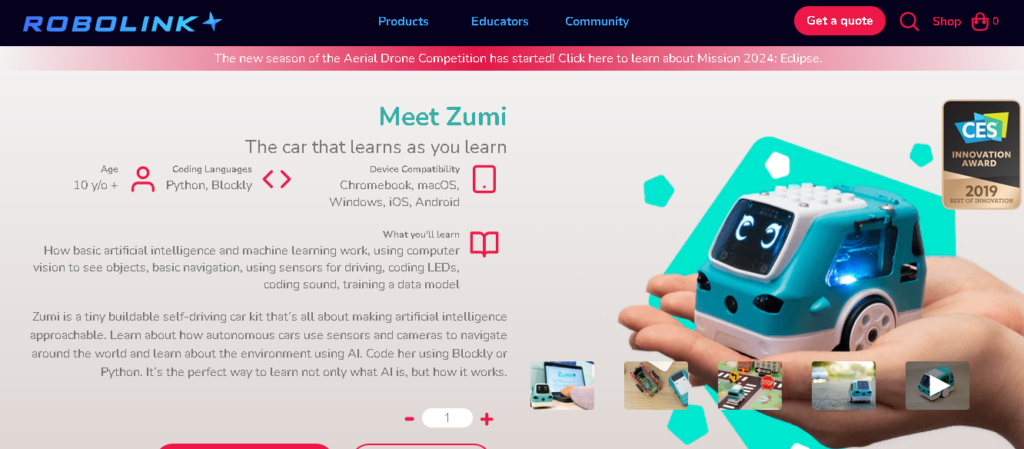
Features:
- Zumi teaches kids the principles of coding through its interactive software.
- Children can code Zümi to move independently, avoiding challenges and guidance lines.
- Zumi is capable of recognizing faces and voices, enabling customizable projects.
Cozmo by Anki
Cozmo is a small robot with a big personality. It comes with its own visual programming language that allows kids to code its actions and emotions.
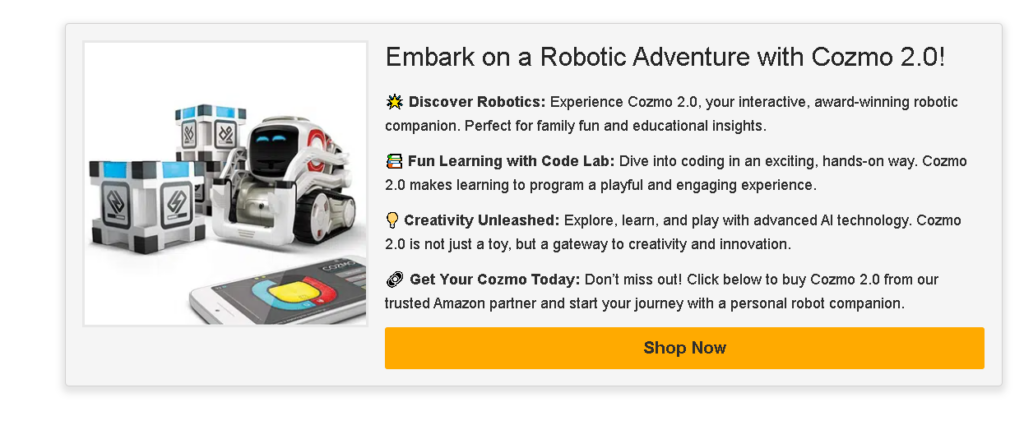
Features:
- AI-powered robot companion.
- Expressive personality with emotions.
- Interactive games and activities.
- Programmable using a visual coding interface.
- Face and object recognition capabilities.
Machine Learning For Kids
This tool is like a friendly teacher that helps kids learn about machine learning. It teaches them how machines can recognize things like text, numbers, images, and sounds. Kids can have fun training models and making projects or games using this tool.
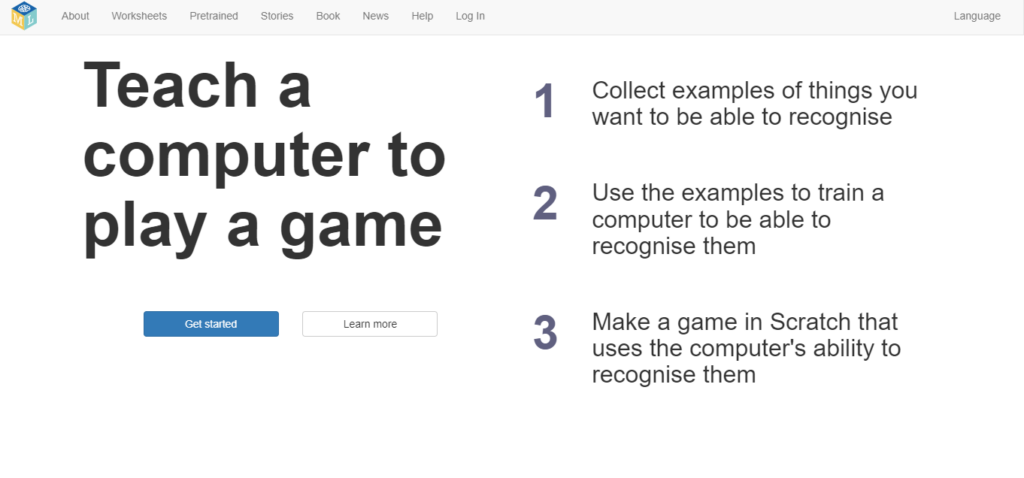
It makes coding easy and enjoyable for kids, introducing them to the world of computer science. The tool even lets them use webcams to teach machines to recognize images. It’s a free and widely used tool that’s available for schools, code clubs, and families around the world since 2017.
Features:
- Allows kids to train machine learning models using a simplified interface.
- Teaches the basics of machine learning concepts such as training data, testing data, and algorithms.
- Provides hands-on experience in creating and implementing machine learning projects.
Cognimates
Cognimates is specifically designed for kids, providing them with opportunities to learn how to create games, program robots, and train their own AI models in a playful and educational environment.
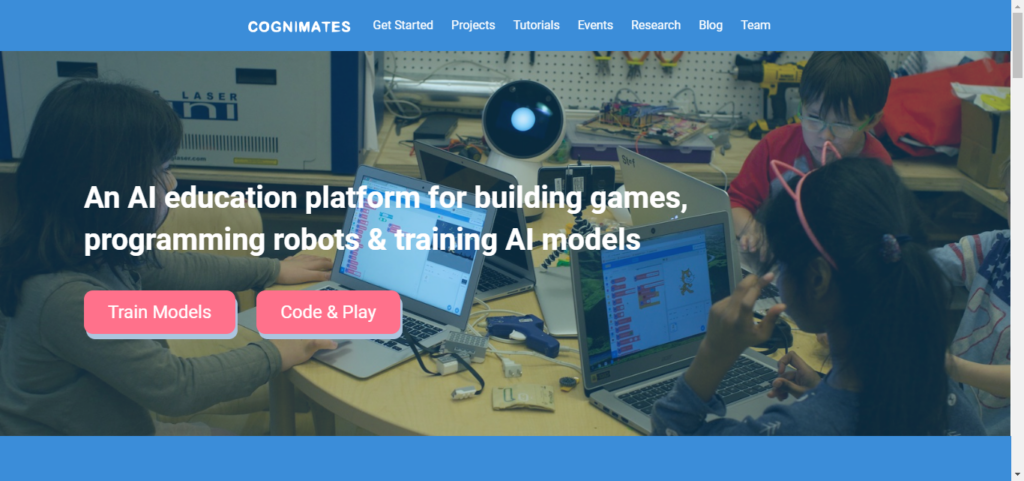
Features:
- Enables kids to create and train their own AI models.
- Introduces fundamental concepts of artificial intelligence in a playful and interactive manner.
- Offers a range of activities and projects to foster creativity and critical thinking.
- Supports learning in various AI-related areas, including image recognition and natural language processing.
Tensorflow Playground and Machine Learning
Google provides unique tools, such as TensorFlow Playground, to teach more people about artificial intelligence (AI) and machine learning. This tool involves creating a program that learns from data, similar to how the human brain works. Users can experiment with neural networks, sending messages, and solving problems.
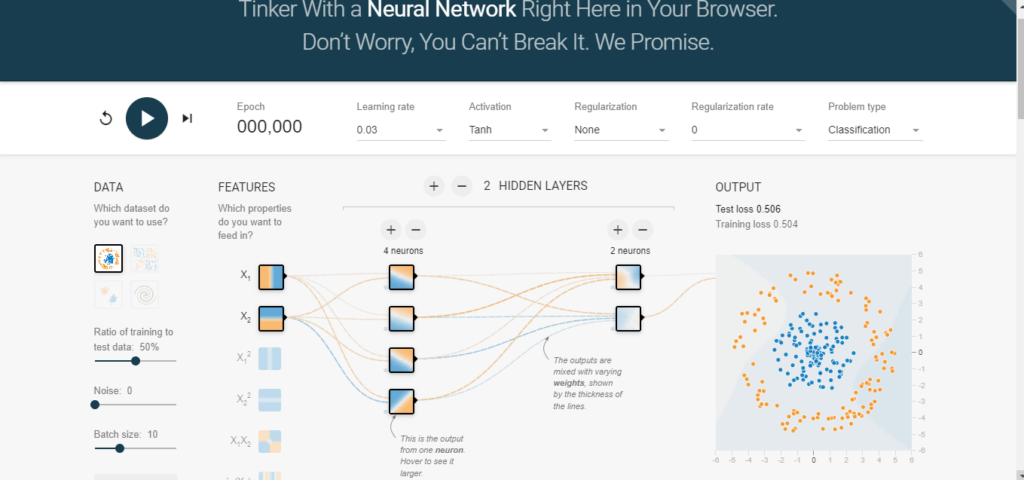
Google focuses on coding, math, ML theory, and project design, offering a machine learning crash course to make AI and machine learning accessible to a wider audience through engaging tools like TensorFlow Playground.
Features:
- Allows users, including kids, to experiment with neural networks and machine learning concepts in a visual and interactive way.
- Offers a user-friendly interface for adjusting parameters and seeing real-time results.
- Ideal for beginners to understand how changing parameters impacts model training and predictions.
AI Experiments With Google
This tool is made for kids to cover different topics and allows them to chat with A.I. using images, drawings, language, and music.

Kids can even create their own A.I. models without needing to learn how to code. It’s an easy way for young minds to learn, making it a fun and accessible method.
Features:
- Provides a variety of interactive AI experiments covering areas such as drawing, music, and language.
- Offers a hands-on experience for kids to explore the possibilities of AI in a creative and fun environment.
- Encourages curiosity and experimentation with artificial intelligence concepts.
AI Family Challenge
The AI Family Challenge is a fun way for kids and adults to discover a cool tool called AI. With ten simple lessons, families can explore AI’s potential and create a project that benefits their community. Picture kids using AI to solve everyday issues, such as cutting down on food waste or making homes more eco-friendly! This free program sparks creativity and demonstrates that AI can be a helpful friend, not a frightening robot. Join the adventure and see what amazing things your family can come up with!
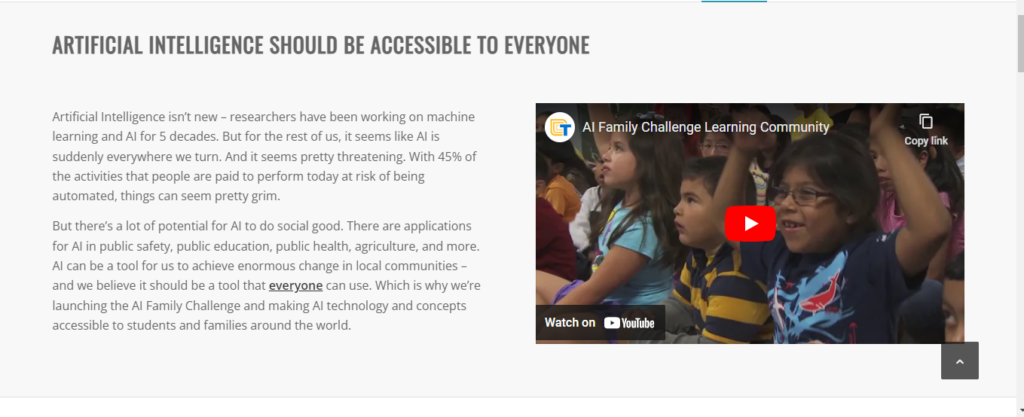
These AI tools for kids are like doors that open into a fun and creative world where learning is mixed with having a good time. They don’t just help kids learn about technology, but they also help them be more creative, better at solving problems, and able to adapt to new things. Also, these tools help teachers and parents get kids excited about learning with technology, getting them ready for what’s coming in the future.
Features:
- Engages families in collaborative AI-related activities and challenges.
- Encourages learning and exploration of AI concepts in a family-friendly environment.
- Fosters teamwork and problem-solving skills through AI-related projects and challenges.
Technovation’s Programs
Technovation isn’t just a tool; it’s a program helps girls to become leaders and innovators in technology. With a focus on AI, Technovation offers a platform for young minds to join global tech challenges.
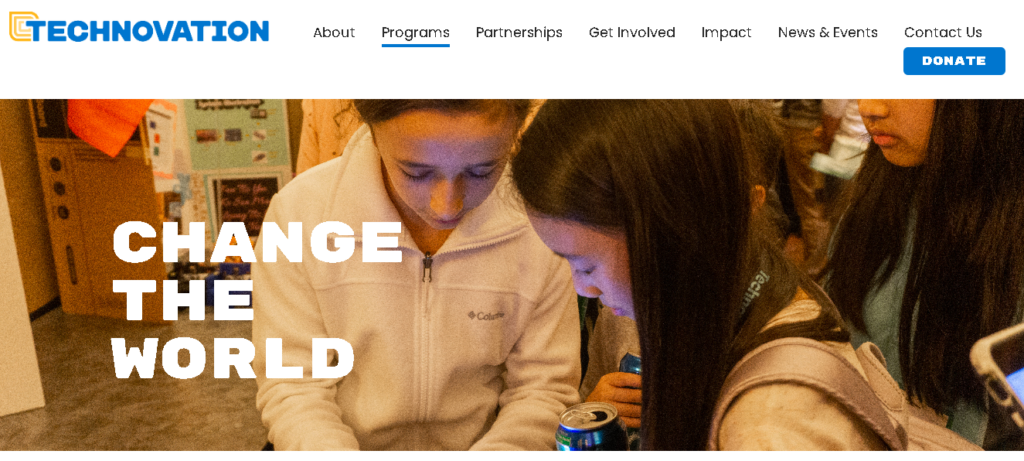
Features:
- Girls can learn to code by working on real-world projects.
- The program encourages girls to identify problems in their communities and develop tech-based solutions.
- Provides a platform for global tech challenges.
Future Trends of AI Tools
In the future, kids’ toys and learning tools will get way cooler and easier to use, thanks to smart technology. Think personalized learning adventures that change to match what each kid loves and is good at. These tools will help kids build their imaginations, think for themselves, and solve problems, getting them ready for whatever the future holds. But don’t worry, safety and privacy will be super important, like a grown-up watching over everything while kids play and learn. So, the future of kids’ AI tools looks bright, mixing fun and learning to make the next generation even smarter and awesome!
How to Choose the Right AI Tools for Kids?
Deciding on the right AI tool for your child involves considering a few key factors.
- Age Appropriateness: Choose a tool that suits your child’s age and educational level.
- Interests: Consider your child’s interests. The more the tool aligns with their passions, the more likely they are to stay engaged.
- Accessibility: Ensure the tool is accessible, both in terms of technology requirements and your child’s learning pace.
- Balance with Traditional Learning: While AI tools are powerful, they should add to traditional learning instead of replacing it completely.
Learn More: Features to Look for in the Best AI Tools for Children
Implementing AI Tools in Children’s Education
Want to level up your kids’ learning with cool AI tech? Here’s the plan
- Fun Learning Websites and Apps: Imagine websites and apps that teach math, science, or anything else, but WAY more exciting! These smart platforms use special tricks to make learning a blast.
- Super Cool STEM Tools: Robots, coding, and other science stuff just got even cooler with AI! These special tools let kids learn through playing with robots and building programs.
- Start Small and Fun: Don’t throw your kids into the deep end. Begin with something easy and exciting, like learning to code a game or building a simple robot.
- Join the Learning Adventure: Jump in and learn with your kids! It’s a great way to bond and help them understand the AI tools.
- Let Kids Explore at Their Own Pace: Don’t rush! Give your kids time to mess around and discover things on their own. Learning should be fun and personal, not stressful.
Remember, AI tools are like awesome, supercharged toys that help kids learn and grow. Use them right, and your kids will be having a blast while getting smarter and more creative!
Learn More: 10 Best AI Tools For Education In 2024
Conclusion
In conclusion, the array of AI tools available for educational purposes is vast and diverse. From 1 to 5, AI tools cater to the needs of children, serving as engaging companions in their learning journey. Moving forward, from 6 to 10, AI tools extend their reach to students above the age of 10, offering more sophisticated learning experiences tailored to their advancing cognitive abilities.
AI tools for kids are like fun helpers that make learning cool and exciting. They’re not just for kids but also help parents and teachers see how kids are doing in learning new things.Using AI in educational tools for kids can make learning more fun, personalized, and helpful. Picking the right AI tools for your child can give them a special learning experience, encouraging curiosity, thinking skills, and modern abilities. So, if you’re curious about AI, these tools are a great way to start exploring and having fun while doing it!
FAQS
Q1. What can children learn from artificial intelligence?
AI can open doors to a wonderland of learning for children! They can:
- Unlock the magic of coding: Learn how to give instructions to computers, building their own games, animations, or even robots!
- Sharpen their problem-solving skills: Tackle challenges logically and step-by-step, becoming better at thinking critically and overcoming obstacles.
- Dive into the world of science and technology: Understand how robots work, explore fascinating STEM concepts, and fuel their curiosity about the world around them.
- Boost their creativity: AI tools can spark imagination, encouraging kids to come up with new ideas and express themselves in unique ways.
- Develop essential 21st-century skills: From collaboration and communication to digital literacy and adaptability, AI tools can help kids prepare for a future driven by technology.
Q2. How does AI help children?
AI goes beyond traditional learning methods to personalize and engage children in ways that benefit them:
- Makes learning interactive and fun: AI tools gamify learning, turning it into an exciting adventure that keeps kids motivated and engaged.
- Provides personalized learning paths: AI adapts to each child’s pace and interests, offering customized experiences that cater to their unique needs.
- Offers instant feedback and guidance: AI tools provide real-time feedback and support, helping kids learn from their mistakes and improve their skills.
- Promotes independent learning: AI encourages children to explore and discover at their own pace, fostering a sense of confidence and self-reliance.
Q3. Which AI tool is best for kids?
There’s no one-size-fits-all answer, as the best AI tool depends on your child’s age, interests, and learning goals. Here are some examples:
- For little learners (3-5 years old): Duolingo, Osmo’s Educational Kits,Zumi the AI Robot
- For curious minds (6-9 years old): Zumi the AI Robot,Cozmo by Anki,Cognimates
- For budding technologists (10+ years old): Machine Learning For Kids,AI Experiments With Google,AI Family Challenge
- For Girls (Junior Division: girls ages 13-15. Senior Division: girls ages 16-18.):Technovation’s Programs
It’s important to research and choose tools that are age-appropriate, safe, and promote responsible digital citizenship.
Q4. Is AI good for children?
Like any tool, AI can be beneficial or harmful depending on how it’s used. When used responsibly and with proper guidance, AI can be a powerful force for good in a child’s education. However, it’s essential to:
- Prioritize real-world interaction and social skills: AI shouldn’t replace human interaction and play. Encourage physical activity, outdoor time, and face-to-face interactions.
- Focus on age-appropriate content: Choose tools that are safe and suitable for your child’s developmental stage.
- Monitor usage and set boundaries: Establish screen time limits and monitor what your child is doing with AI tools.
- Teach responsible digital citizenship: Discuss concepts like privacy, online safety, and ethical AI use.
Q5. How do I teach my child artificial intelligence?
Start by exploring AI together! Here are some tips:
- Play with AI-powered games and toys: Let your child experience AI firsthand through interactive games and tools.
- Visit museums and exhibitions: Many museums offer exhibits on AI, where kids can learn about its history and applications.
- Read books and watch documentaries: Age-appropriate books and documentaries can provide engaging introductions to the world of AI.
- Encourage their curiosity: Ask questions, engage in discussions, and support their exploration of AI concepts.
- Enroll in AI-focused workshops or classes: Consider enrolling your child in workshops or classes designed to teach them coding, robotics, or other AI-related skills.
Remember, the key is to make it fun, interactive, and age-appropriate! By introducing AI in a positive and responsible way, you can help your child develop valuable skills and prepare them for a future filled with exciting possibilities.

![You are currently viewing 10 Best AI Tools For Kids In [Januray 2025]](https://techvibe.ai/wp-content/uploads/2024/01/Top-AI-Tools-kids-.png)

